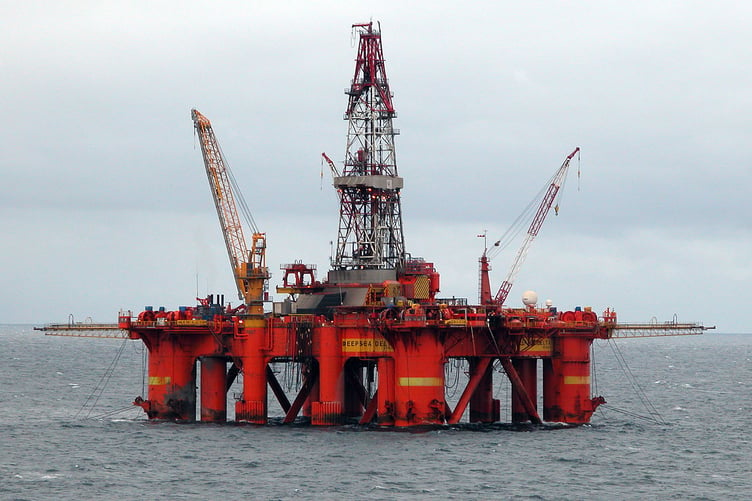Crude oil lies around 2,000 metres below the surface of the Earth. The drilling rigs that bring it to the surface are powered by electricity. One offshore platform can have up to 10 diesel generators onboard to cover its power needs, using 20-30 tonnes of diesel per day. To cut the costs of buying diesel to run generators, North Sea offshore platforms are now turning to cheaper wind energy.
UK company, Cerrulean, is developing three large floating windfarms in the middle of the North Sea, 100 km apart, each with hundreds of turbines, to power the platforms. They will be connected by subsea electricity cables and combined with batteries to store energy on the platforms to provide a constant and reliable power source. Norway already has the world’s largest floating windfarm powering a third of its oil and gas fields.
There is no small irony in powering the drilling of oil and gas with renewable wind energy. Moreover, this accounts for just a fraction of the oil industry’s energy use. 15% of global energy-related emissions come from the process of extracting oil and gas and delivering it to consumers. Energy is used in pump stations across the world to pump the 100 million barrels of oil a day we consume through 337,000 miles of oil pipeline.
Imported and exported oil is shipped by tanker. The oceans are unregulated as regards emissions, so ships use the cheapest and dirtiest fuel to keep costs down, making them one of the largest pollution sources on the planet. Shipping is responsible for an estimated 1 billion tonnes of CO2 per year, and 30% of that is to transport oil.
Refining 100 million barrels of oil a day by heating it to temperatures of over 400°C requires an enormous amount of energy. Refineries create a serious pollution and health hazard with people living near them at increased risk of lung disease and cancer.
After using all that energy in pumping oil out of the ground, refining it and transporting it, and the associated pollution, it is then burnt in internal combustion engines that have an energy efficiency of only 20-30% – meaning only up to 30% of the energy goes to turning the wheels and the other 70% or more of the energy is wasted as heat.
Despite oil companies powering their offshore platforms with renewables, the oil will still pollute when burnt. But by turning to cheap wind energy, oil companies can make bigger profits selling us their expensive oil. Instead, we could simply use that cheap electricity directly to power electric vehicles that are around 80% efficient, and eliminate all the pollution from producing and burning oil.
The electricity used just to power the world’s 1,500 offshore oil rigs would power 55 million electric vehicles. So, instead, of using those three new North Sea windfarms to power the platforms, let’s use that clean electricity to run clean electric vehicles, and eliminate fossil fuel production – an incredibly dirty and inefficient process from start to finish.





Comments
This article has no comments yet. Be the first to leave a comment.